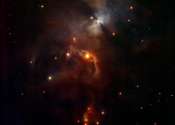Drawing the line between stars and brown dwarfs
(Phys.org) —Stars come in a tremendous size range, from many tens of times bigger than the Sun to a tiny fraction of its size. But the answer to just how small an astronomical body can be, and still be a star, has never ...








